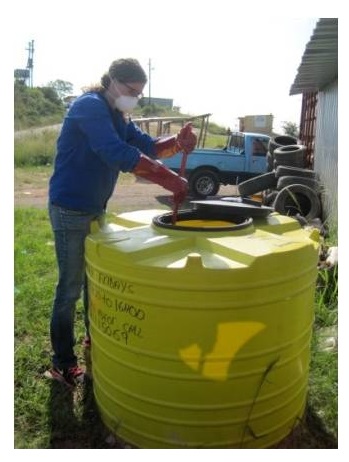
Source-separating toilets (i.e., toilets that separately collect liquid and solid excreta) are a promising technology for waste collection with limited water use. In addition, this technology is suitable for areas lacking connectivity to a centralized sewer system. Finally, the separation and collection of undiluted urine facilitates the recovery of nutrients; as such, it can reduce environmental pollution from disposal of untreated waste, while generating revenue from the production of valuable fertilizers. Urine treatment processes must yield high-quality fertilizer products that are protective of human and environmental health and that ensure adequate quality for optimal market value. However, the handling and treatment of urine bears human health risks, which arise from exposure to pathogens commonly found in source-separated urine. Therefore, pathogens should be inactivated to an acceptable extent to reduce the risks during urine collection and handling. In this context, this project aims to determine the occurrence of viruses and other pathogens in source-separated urine, assess the fate of pathogen fate in urine during storage, treatment and fertilizer production, and assess the risk to handlers during collection.
This project is part of two large-scale projects (VUNA and Blue Diversion – Autarky), coordinated by Dr. Kai Udert, and we are collaborating with Prof. Björn Vinneras of the Swedish Agricultural University.